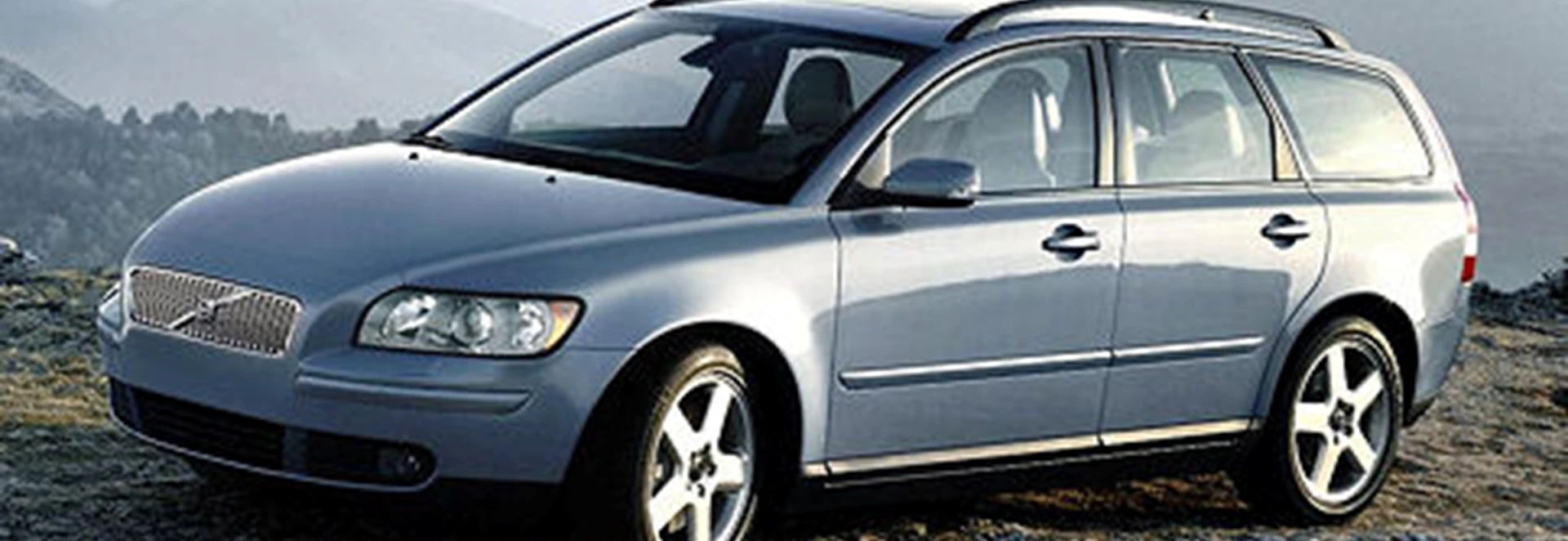Of all the cars in the new S40/V50 range (or ranges, rather, since they are aimed at two quite distinct markets despite the obvious similarities), this one most closely matches the traditional Volvo values. What, after all, could more ideally sum up the idea of sturdy, practical transport than a diesel estate?But it's not as simple as that. Volvo is going to some lengths to distance itself from those values. While a previous generation of customer might not have given a moment's consideration to buying an Audi or a BMW, Volvo is promoting the V50 as a direct rival to the A4 Avant and the 3-Series Touring. Neither of those cars is officially described as an estate, and nor is the V50. Instead, Volvo describes it as a Sportswagon.Names like that occasionally seem to flag up a warning - "this may look like an estate but it doesn't actually carry much luggage" - and there may be an element of that going on here. The V50 shares with the S40 saloon a very cramped rear seating arrangement, and there isn't a great deal of room farther back either. Volvo quotes 417 litres of luggage volume with the rear seats up, 717 litres with them down and 1307 litres in the event that you want to load the car up to roof level.All these figures could be greater than they are but for a strange feature of the luggage compartment. When I opened the tailgate of the test car to nosey around, I was surprised by how high the boot floor is. Further investigation revealed that underneath the carpet there is a large well filled with a moulded container which houses the jack and . . . a space-saver spare wheel! In an extraordinary piece of packaging, a huge amount of room is devoted to carrying a piece of equipment which was designed in the first place not to take up much room at all. I wonder who thought that was a good idea.If you need to carry more than the car will take, all is not lost, since the accessory range includes four optional roof boxes with volumes ranging from 310 to 450 litres, and which cost between £220 and £310.All of this applies to the V50 generally. The two-litre turbo diesel engine as found in the test car is a fine piece of work. As with many units of this type, the official figures of 130mph top speed and 0-62mph in 9.6 seconds do not begin to express how effective the mid-range performance is. If you need sudden acceleration, for example when overtaking, you've got it, almost regardless of the engine speed or which of the six gears you're in.As long as you don't use the performance too much, an official combined fuel economy figure of nearly 50mpg suggests that a range of well over 500 miles should be achievable between refuelling stops, even though the tank carries a gallon and a half less than those in the petrol cars.The only problem with the engine is that it's quite loud, or at least that whatever noise suppression work has been done has failed to prevent a good deal of the sound entering the passenger compartment. It doesn't matter what speed you're doing, or how much the engine has warmed up - you're always aware that the characteristically thumpy process of compression ignition is going on under the bonnet.If you've driven a petrol version there's also no question that the weight of the diesel engine has its effect on the ride and handling, though in this case the effect isn't too severe. In general the S40/V50 feels a little clumsy (as if it's a much bigger car than it actually is) but proves unexpectedly nimble on corners, partly thanks to grip levels that are way beyond the requirements of most owners. If the diesel has a little more front-end body movement than the equivalent petrol cars, its superior mid-range pull as you accelerate out of a bend more than makes up for it.The driving experience is pleasant for another reason too. We've had reason in the past to complain that the major controls on other Volvos are weighted quite differently from one another, which can become very tiresome, but that isn't the case here. The steering, accelerator, brake and clutch all require similar amounts of effort to operate, and although the gearchange quality isn't as slick as it might be (which in fairness may be because the test car was a very low-mileage example) it's no heavier than the other controls.The SE version represents the higher of two specifications. For just over £2000 you get various items which are either upgrades of what you would find on the S, or are available on that car only as optional extras. Further options are generally not very expensive (unless you specify a lot of them), and you only start paying serious money for things like leather upholstery at £1000, electrically-operated front seats at £1100 and a navigation system with European DVD map at £2200. The Geartronic transmission, available elsewhere in the range for an extra £1250, can't be specified with the diesel engine.Option packages are also available, starting with the modest Family pack (two booster cushions and child locks) at £250 and rising through Winter, Convenience and Bi-Xenon to the top-spec Communications, which includes Volvo On Call, the navigation system and an integrated GSM telephone, and which adds £2500 to the list price. Engine 1998cc, 4 cylinders Power 136bhp Transmission 6-speed manual Fuel/CO2 48.7mpg / 154g/km Acceleration 0-62mph: 9.6 seconds Top speed 130mph Price £20,510 Details correct at publication date

Our Rating



